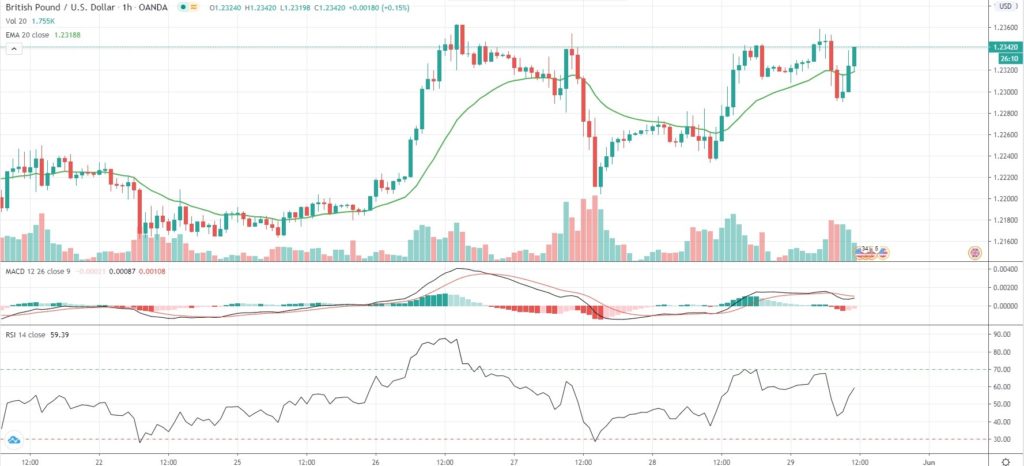GBP/USD maintained ground above the 1.2300 mark during late European trade on Friday, mostly on weaker US Dollar, while risks such as Brexit uncertainty, rising debt, sluggish recovery and negative interest rates continued to weigh on Sterling, restraining the upside.
“The medium-term outlook remains negative for sterling as the no-deal Brexit anxieties will likely curb the appetite before the 1.25/1.2515 area,” Ipek Ozkardeskaya, senior analyst at Swissquote Bank wrote in an investor note.
Even as restrictive measures are set to ease next week for the majority of British population, as announced by PM Boris Johnson yesterday, there still remain concerns over no progress being made on Brexit, more job losses and slower economic recovery than previously expected.
Bank of England policy maker Michael Saunders said Thursday that British economy might not manage to recover fully from the “searing experience” of the pandemic within the upcoming 2 to 3 years. This dim assessment came three weeks after Bank of England published a scenario, according to which economic output may return to levels, observed before the pandemic, in 2021.
“If unchecked, there are risks of a vicious circle, whereby the economy gets stuck in a self-feeding loop of weak activity, pessimistic expectations and low investment,” BoE’s Saunders warned.
As of 11:44 GMT on Friday GBP/USD was gaining 0.24% to trade at 1.2351, after touching an intraday high of 1.2358 during late Asian trade. It has been the third failed attempt for the pair to break above the high from May 26th (1.2363).
In terms of economic calendar, at 12:30 GMT today the US Bureau of Economic Analysis is expected to report on core PCE inflation for April. The Core Personal Consumption Expenditure (PCE) Price Index, which does not include prices of food and energy and represents the Federal Reserve’s preferred measure of inflation, is expected to increase 1.1% year-on-year in April. Annual core PCE inflation was reported at 1.7% in March, or the 14th consecutive month when core inflation was below Fed’s 2% target.
At 13:45 GMT ISM-Chicago Inc will report on manufacturing activity in the region. The Chicago Business Barometer probably remained in the contraction area for a ninth straight month in May, according to market expectations, coming in at 40.0. In April, the gauge was reported at 35.4, pointing to the deepest contraction since March 2009, as the sub-index of production registered its lowest reading since June 1980, while that of new orders plummeted at a record rate.
The monthly survey by Thomson Reuters and the University of Michigan may show that US consumer confidence recovered slightly in May from a month ago. The final index reading, which usually comes out two weeks after the preliminary data, probably came in at 74.0 in May, up from a preliminary value of 73.7. In April, the consumer sentiment index stood at a final 71.8, an 8-year low. The report is due out at 14:00 GMT.
At 15:00 GMT Fed Chair Jerome Powell will participate in the Griswold Center for Economic Policy Studies Princeton Reunions Talk, an event hosted by Alan Blinder, Gordon S. Rentschler Memorial Professor of Economics and Public Affairs at Princeton University and former vice chair of the Board of Governors of the Federal Reserve System.
Bond Yield Spread
The spread between 2-year US and 2-year UK bond yields, which reflects the flow of funds in a short term, equaled 21.4 basis points (0.214%) as of 10:15 GMT on Friday. It has been the highest spread since May 27th (22.2 basis points).
Daily Pivot Levels (traditional method of calculation)
Central Pivot – 1.2300
R1 – 1.2366
R2 – 1.2411
R3 – 1.2477
R4 – 1.2543
S1 – 1.2256
S2 – 1.2189
S3 – 1.2145
S4 – 1.2100






